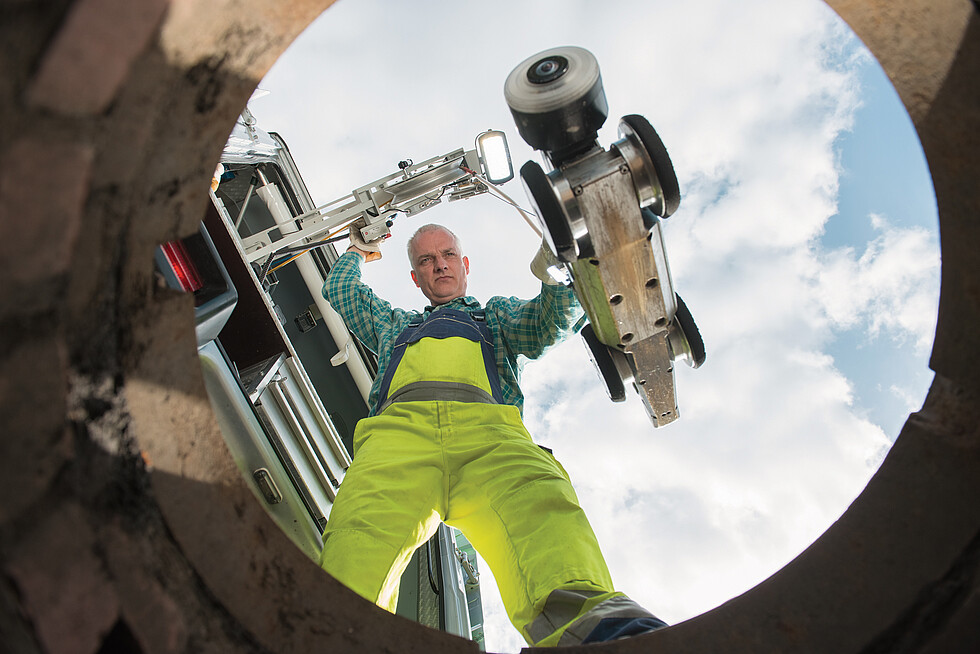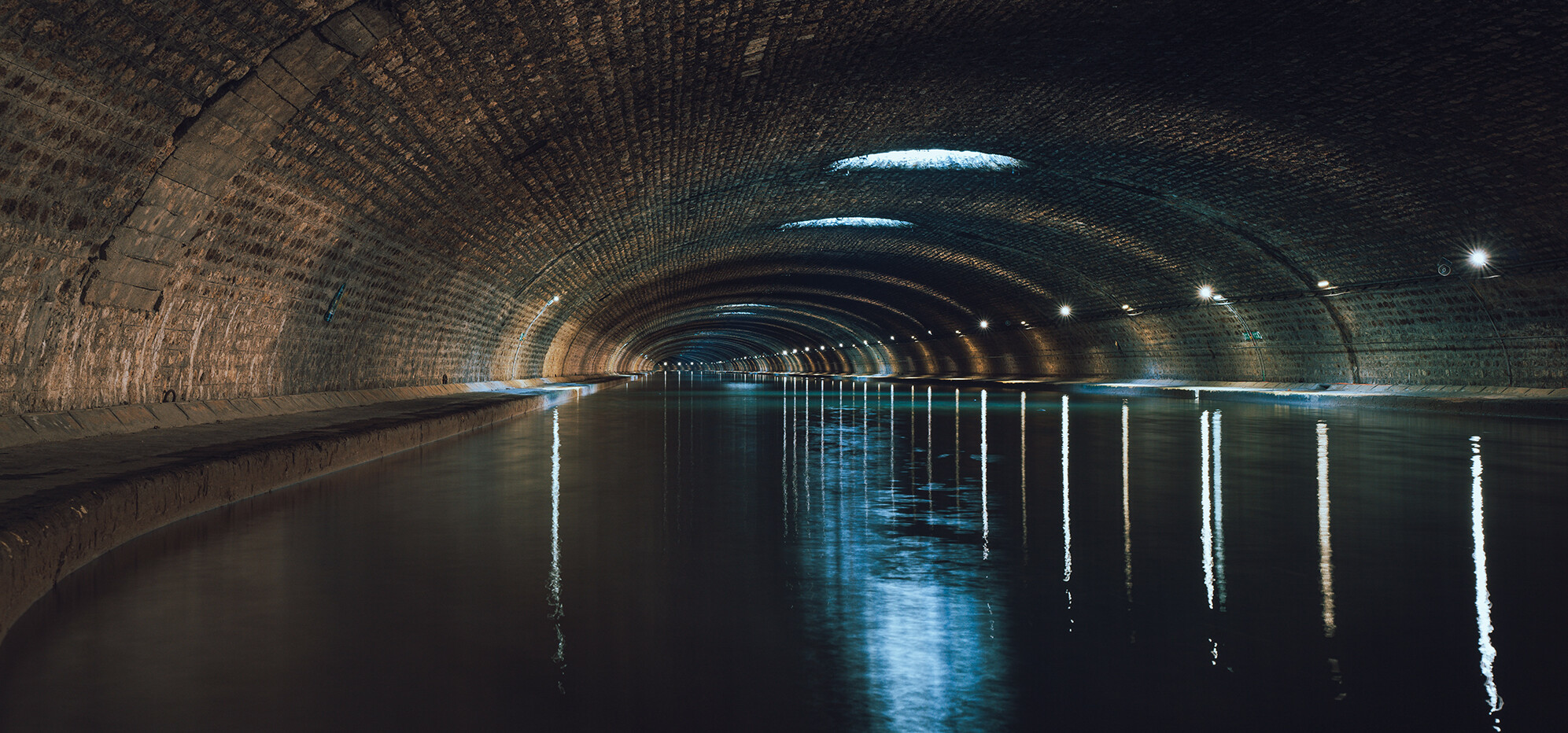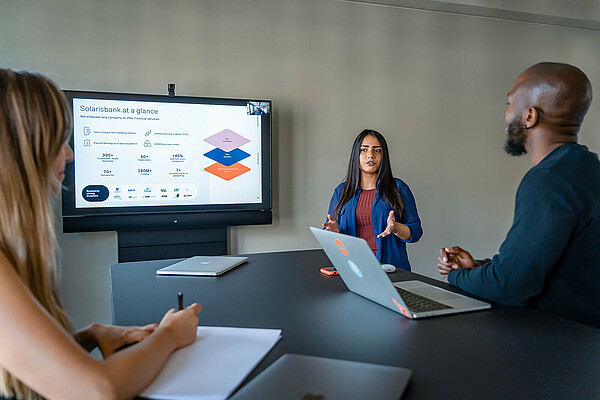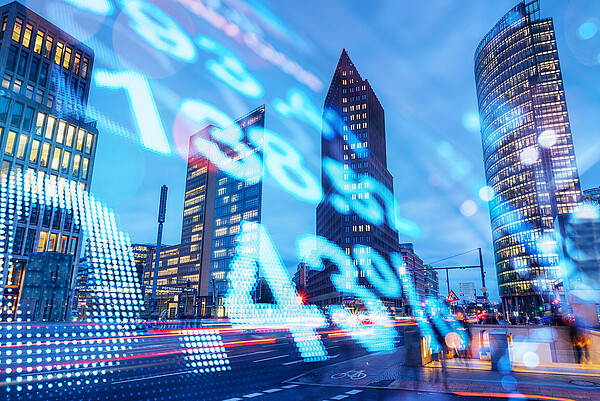Where Water Works
From morning showers and swimming baths via sewers to waste water treatment plants. From groundwater via wells to drinking water – life without water is unthinkable.
You might think that water is, quite clearly, just water. We take H2O almost as for granted as the air we breathe. But the significance of water is great. It relates to issues such as energy efficiency, climate change, infrastructure, pollution, resources, and digitisation.
That’s why Berlin has a “Center of competence for water”, the KWB, working on the European joint project digital-water.city (DWC), specifically to improve infrastructure performance and reduce environmental impacts of water systems.
How can water be digital?
You’ll have noticed how the language of electronics and digital technologies relies almost as heavily on ‘liquid’ metaphors as finance. An electrical current flows as does data. But if you throw a computer into a bathtub the device will be broken, and anyone in the tub in danger of a shock. So normally water is not connected in our minds with digital tech. Yet Berlin is one of five Digital Water Cities in Europe, the others being Paris, Sofia, Copenhagen, and Milan.
The point of the EU Horizon 2020 project is to apply digital and data technologies to urban water management. Cities are facing considerable challenges when it comes to a sustainable supply of clean water as well as the management of water infrastructures. Human health depends on clean water and the correct processing of waste water. Also, there are business interests to consider, and tech solutions involving artificial intelligence, machine learning, real-time sensors, or cloud-based software are helping to increase efficiency in services for consumers as well as collaboration between authorities and utilities, not to mention involving the public in the policies of the municipalities.
As ever, the use of new technologies creates questions of governance and public involvement, interoperability, market uptake, and cybersecurity. DWC is dedicated to addressing such issues arising out of the implementation of new digital solutions.
In Berlin, work is being done in collaboration with Berliner Wasserbetriebe on several innovations designed to reduce the environmental impacts of the sewer network and optimize the maintenance and planning of wells. Advanced monitoring technologies track sewer connections within the stormwater network, and machine learning algorithms are being implemented in the proactive maintenance of drinking water wells.

To communicate to the public the significance of drinking water as an integral resource and part of the water cycle, an augmented reality app is being developed to help people visualize groundwater flows. Groundwater is essentially not visible, like the water in a sponge is not detectable until you squeeze it. The app is being developed so that people can “dive” into the groundwater and through understanding its mechanisms, learn about why its protection is so important to maintain the high quality of tap water in Berlin.
Sensors in Berlin
So let’s look at a couple of example scenarios. Previously, water samples would be taken from the Spree river flowing through the center of the city and sent to the lab for microbial testing. A few days later the results would be in, and either there would be a problem or not. At some later date the process would be repeated and another sample taken.
Today water sensors are placed permanently in several places along the Spree throughout the city. These send data which are accessible in near real-time to anyone concerned via specific apps. Therefore discovering issues is left less to chance, and notifications are sent automatically when any readings show indications of problems. This is “smart monitoring”, which can be of benefit to the general public for instance by letting people know if the water is safe for swimming.
Similar sensors have also been placed in over 20 locations in the sewage network and can detect faulty pipes or problematic discharges of waste-water. The digital monitoring system is proving far more efficient than previous methods of manual visual inspections.
Other technologies being implemented are artificial intelligence and machine learning in simulations of water flow and processes at treatment plants. Modelling tools are being used for predictive analyses of the performance of systems and infrastructures in normal or extraordinary conditions such as very strong rain. The idea is to ultimately save costs as well as use the information so gathered to engage the public.
Digital Solutions to Real-Life Problems
Berlin is growing. While currently with a population of 3,6 million people, is reckoning with 4 million soon. Furthermore, the climate crisis is noticeable in Berlin as everywhere else, with the city getting hotter and more high-rain events taking place at shorter intervals. In the face of such challenges, a resilient and sustainable overall water infrastructure is more important than ever.
Here are some of the different specific solutions being implemented as part of the DWC project in Berlin in close cooperation with the Berliner Wasserbetriebe, responsible for drinking water production and wastewater treatment:
- Wells – a monitoring app solution supporting the Berliner Wasserbetriebe in shifting from time-based maintenance of individual wells to condition-based maintenance based on an overview of all wells (there are about 650 wells in Berlin).
- Sewage sensors – distributed temperature sensing (DTS) is a technique used to detect and locate extraneous inflows in sewer systems by sending pulsed laser light into fibre-optic cables and processing the reflected signals into temperature values.
- Sewer connections – the KANDO Smart Unit tracks industrial discharges through real-time water quality monitoring with multi-parameter sensors and automatic sampling, continuously detecting sources of pollution across the city and automatically identifying pollution events using distributed predictive analytics. Wastewater contamination in stormwater causes concentration of dissolved ions, which is directly measurable by electric conductivity.
- Bacterial measurements – the ALERT System is a sensor manufactured by the company Fluidion for bacterial measurements. Their device allows real-time quantification of “enterococci concentrations”, i.e. of bacterial concentration, emitting real-time automatic alerts.
- Low-cost temperature sensors – combined sewer overflow (CSO) sensors installed at the overflow crest measure air temperature during dry-weather and water temperature when the overflow crest is submerged during a discharge.
- Cleaning and inspection – Xpection combines a high-definition camera with a sewer-cleaning nozzle and wireless communication to inspection teams.
Naturally, the results of these pilot projects are being shared across Europe as part of the DWC project. This transparency is par for the course. The full-scale tests and demonstrations are of benefit to the authorities of other cities, and also to the businesses and technology partners involved, for whom follow-up projects in other countries are likely. For example, the sensors developed for sewer monitoring are low-cost and high-efficiency compared with what was available previously. The ambition is that such new developments and the insights their use brings represent strong business cases for the technology providers and a key starting point to propose the technologies in other cities.
Text: Olaf Bryan Wielk, ideenmanufaktur
Header image: © Florian Olivo / unsplash.com





